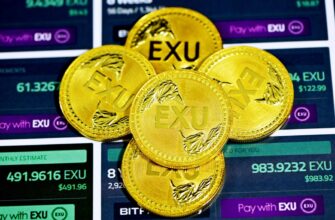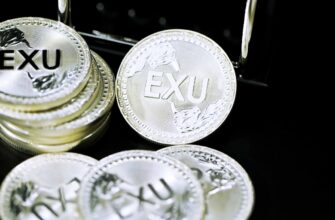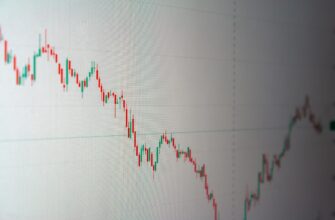- Understanding USDT’s $1 Peg and Its Banking Implications
- How USDT Maintains Its $1 Price Peg
- U.S. Banks’ Role in the USDT Ecosystem
- Buying USDT via U.S. Banks: Step-by-Step
- Regulatory Pressures Shaping USDT’s Future
- FAQs: USDT Pricing and U.S. Banking
- Do U.S. banks set the price of USDT?
- Can I redeem USDT for cash at a bank?
- Why does USDT sometimes trade below $1?
- Are banks developing alternatives to USDT?
- Is USDT legal for U.S. businesses to use?
- Conclusion: Stability Amidst Evolution
Understanding USDT’s $1 Peg and Its Banking Implications
For U.S. banks and their customers navigating the cryptocurrency landscape, Tether (USDT) represents a critical bridge between traditional finance and digital assets. As a USD-pegged stablecoin, USDT maintains a target price of $1 through reserves held by its issuer, Tether Limited. This price stability makes it a preferred tool for hedging volatility, facilitating crypto trades, and enabling cross-border transactions. While U.S. banks don’t directly set USDT’s price, they influence accessibility through banking partnerships with exchanges and regulatory compliance frameworks. Understanding this dynamic is essential for financial institutions assessing crypto integration and customers seeking dollar-equivalent digital liquidity.
How USDT Maintains Its $1 Price Peg
Tether’s dollar peg relies on a combination of reserve backing and market mechanisms:
- Reserve Assets: Tether claims each USDT is backed 1:1 by reserves including cash, Treasury bills, and other liquid assets (though transparency remains debated).
- Arbitrage Enforcement: If USDT trades below $1, traders buy discounted USDT and redeem it with Tether for $1, pushing the price up. The reverse occurs if it trades above $1.
- Exchange Liquidity: High trading volume across major exchanges like Coinbase and Kraken stabilizes prices through continuous buy/sell pressure.
U.S. Banks’ Role in the USDT Ecosystem
While banks don’t issue USDT, they enable its flow through key functions:
- Fiat Gateways: Banks process USD deposits/withdrawals for regulated exchanges where users buy/sell USDT.
- Custody Services: Institutions like BNY Mellon offer crypto custody, indirectly supporting stablecoin security.
- Regulatory Compliance: Banks enforce KYC/AML checks on crypto transactions, affecting USDT’s on-ramp accessibility.
- Competition: Major banks (e.g., JPMorgan) are exploring proprietary stablecoins, potentially rivaling USDT.
Buying USDT via U.S. Banks: Step-by-Step
American users can acquire USDT through bank-linked exchanges:
- Open an account with a U.S.-licensed exchange (Coinbase, Kraken, Gemini).
- Link your bank account via ACH or wire transfer.
- Deposit USD (may take 1-5 business days).
- Trade USD for USDT at prevailing market rates (typically $0.998-$1.002).
- Withdraw USDT to a private wallet for usage.
Note: Some banks block crypto transactions—confirm policies beforehand.
Regulatory Pressures Shaping USDT’s Future
U.S. regulators are tightening oversight with significant implications:
- The SEC considers some stablecoins unregistered securities.
- 2023 saw enforcement actions against exchanges like Kraken over staking services involving USDT.
- Proposed legislation (e.g., Lummis-Gillibrand bill) could mandate 100% reserve audits for stablecoins.
- Federal Reserve’s “FedNow” service may reduce demand for stablecoins in payments.
FAQs: USDT Pricing and U.S. Banking
Do U.S. banks set the price of USDT?
No. USDT’s price is market-driven on exchanges, though banks influence accessibility via fiat gateways.
Can I redeem USDT for cash at a bank?
Not directly. Redeem USDT through authorized exchanges, then withdraw USD to your bank account.
Why does USDT sometimes trade below $1?
Brief depegs occur during market stress or liquidity crunches but usually correct quickly via arbitrage.
Are banks developing alternatives to USDT?
Yes. JPM Coin (JPMorgan) and First Digital USD (NYDFS-approved) represent bank-backed competitors.
Is USDT legal for U.S. businesses to use?
Currently legal, but regulatory uncertainty persists. Consult legal counsel for compliance guidance.
Conclusion: Stability Amidst Evolution
USDT’s $1 peg remains resilient despite regulatory headwinds, serving as vital infrastructure in crypto markets. For U.S. banks, engagement ranges from facilitating transactions to developing proprietary alternatives. As legislation evolves—particularly around reserve transparency and banking partnerships—the interplay between traditional finance and stablecoins will redefine digital asset accessibility. Institutions monitoring USDT’s price mechanics today position themselves for tomorrow’s integrated financial landscape.








